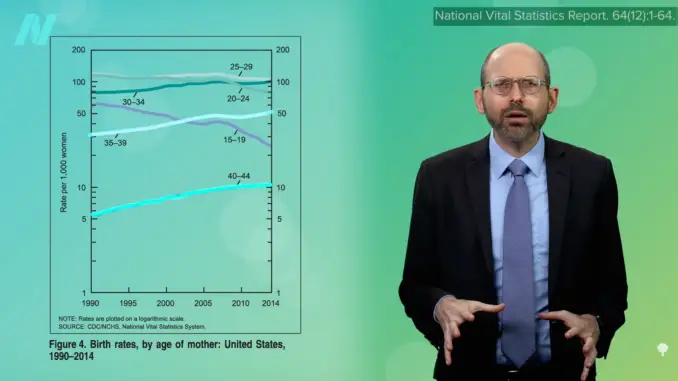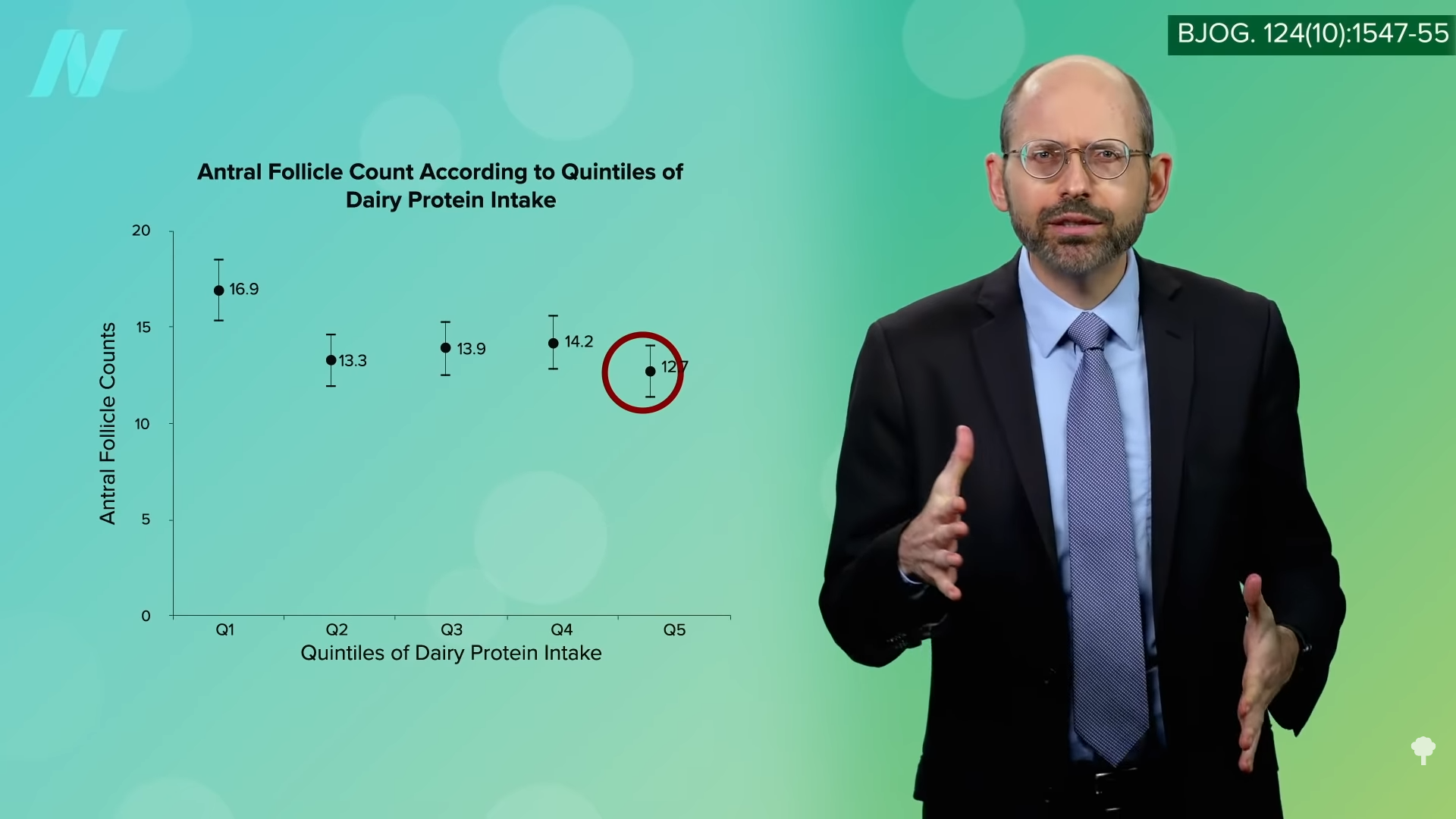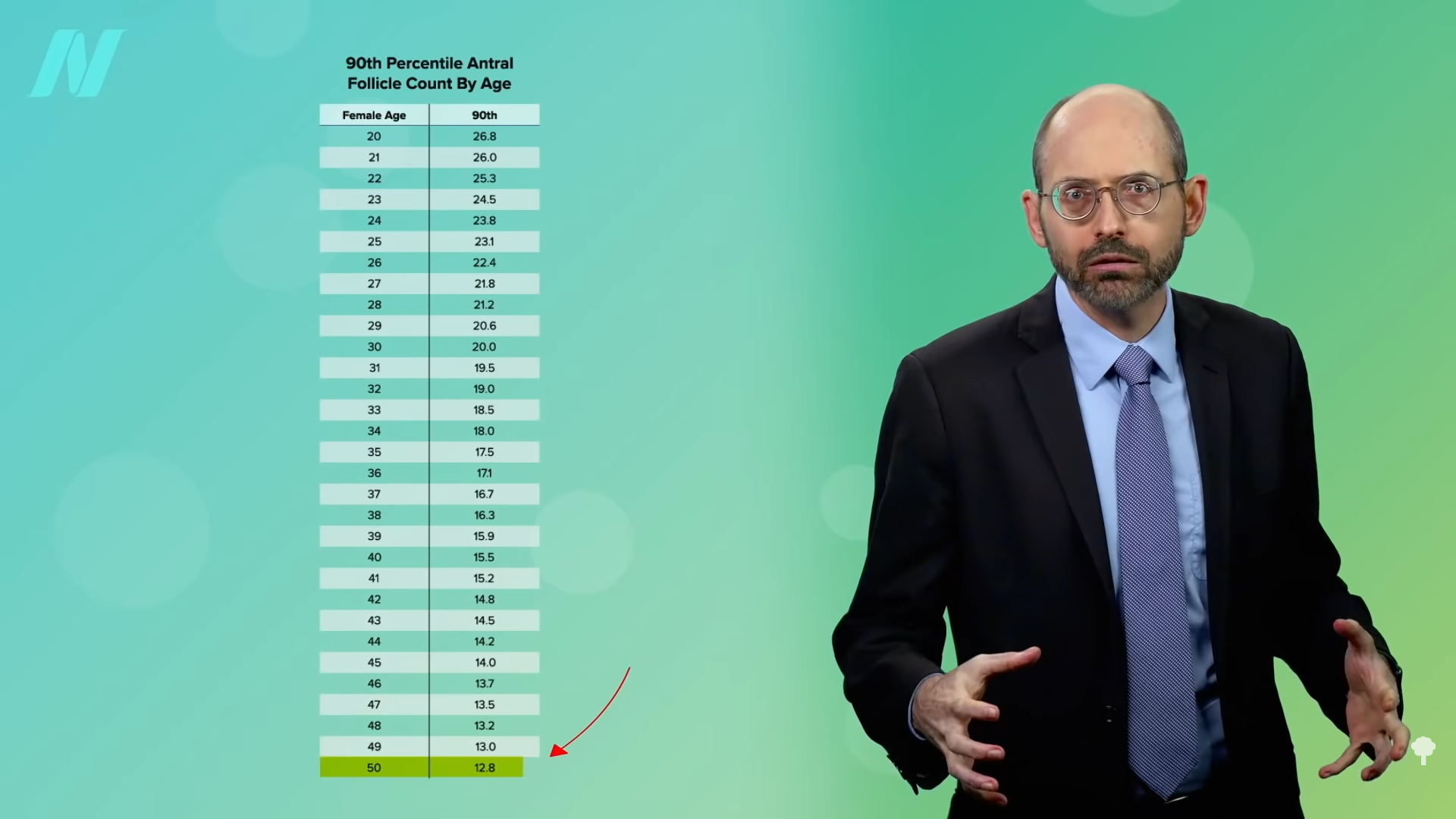
Dairy consumption is associated with years of advanced ovarian aging, thought to be due to the steroid hormones or endocrine-disrupting chemicals in cow’s milk.
When it comes to the amount of steroid hormones we are exposed to in the food supply, dairy “milk products supply about 60–80% of ingested female sex steroids.” I’ve talked about the effects of these estrogens and progesterone in men and prepubescent children, and how milk intake can spike estrogen levels within hours of consumption. You can see graphs illustrating these points from 0:25 in my video The Effects of Hormones in Milk on Infertility in Women. In terms of effects on women, I’ve discussed the increased endometrial cancer risk in postmenopausal women. What about reproductive-age women? Might dairy hormones affect reproduction?
We’ve known that “dairy food intake has been associated with infertility; however, little is known with regard to associations with reproductive hormones or anovulation.” How might dairy do it? By affecting how the uterus prepares, or by affecting the ovary itself? Researchers found that women who ate yogurt or cream had about twice the risk of sporadic anovulation, meaning failure of ovulation, so some months there was no egg to fertilize at all. Now, we know most yogurt is packed with sugar these days. Even plain Greek yogurt can have more sugar than a double chocolate glazed cake donut, but the researchers controlled for that and the results remained after adjusting for the sugar content, “which suggests that the risk of anovulation was independent of the sugar content included in many flavored yogurt products.” We don’t know if this was just a fluke or exactly what the mechanism might be, but if women skip ovulation here and there throughout their lives, might they end up with a larger ovarian reserve of eggs?
Women are starting to have their first baby later in life. As you can see in the graph below and at 2:02 in my video, there’s been a rise in women having babies when they’re in their late 30s and 40s.
We used to think that women’s ovarian reserve of eggs stayed relatively stable until a rapid decline at about age 37, but now we know it appears to be more of a gradual loss of eggs over time. The graph below and at 2:22 in my video charts a steady loss starting at peak fertility in one’s 20s.

This measures “antral follicle count,” which is an ultrasound test where you can count the number of “next batter up” eggs in the ovaries, as you can see below and at 2:31 in my video. It is probably the best reflection of true reproductive age. It’s a measure of ovarian reserve—how many eggs a woman has left.

What does this have to do with diet? Researchers at Harvard looked at the association of various protein intakes with ovarian antral follicle counts among women having trouble getting pregnant. “Even though diminished ovarian reserve is one of the major causes of female infertility, the process leading to reproductive senescence [deterioration with age] currently is poorly understood. In light of emerging population trends towards delayed pregnancy, the identification of reversible factors (including diet) that affect the individual rates of reproductive decline might be of significant clinical value.”
The researchers performed ultrasounds on all the women, studied their diets, and concluded that higher intake of dairy protein was associated with lower antral follicle counts—in other words, accelerated ovarian aging. The graph below and at 3:39 in my video shows what counts look like in nonsmokers: Significantly lower ovarian reserve (12.7 antral follicle counts) at the highest dairy intake, which would be like three ounces of cheese a day, compared to the lowest dairy intake (16.9 antral follicle counts).

What do these numbers mean in terms of biological age? Is 16.9 down to 12.7 really that much of a difference? As you can see below and at 3:58 in my video, when you look at women with really robust ovaries, a follicle count of 16.9 is what you might see in a 36- or 37-year-old, whereas 12.7, which is what you can see in women eating the most dairy, is what you might see in a really fertile 50-year-old. So, we’re talking year’s worth of ovarian aging between the highest and lowest dairy consumers.

While it wasn’t possible for the researchers to “identify the underlying mechanism linking higher dairy protein intake to lower AFC,” antral follicle count, they had educated guesses. (1) It could be the steroid hormones and growth factors or (2) “the contamination of milk products by pesticides and endocrine disrupting chemicals that may negatively impact” the development of these ovarian follicles and egg competence.
“Regarding the former [the hormones], studies suggest that commercial milk (derived from both pregnant and non-pregnant animals) contains large amounts of estrogens, progesterone, and other placental hormones that are eventually released into the human food chain, with dairy intake accounting for 60–80% of the estrogens consumed. Dairy estrogens overcome [survive] processing, appear in raw whole cow’s and commercial milk products, are found in substantially higher concentrations with increasing amounts of milk fat, with no apparent difference between organic and conventional dairy products…” Hormones are just naturally in cows’ bodies, so they aren’t just in the ones injected with growth hormones. And, once these bovine hormones are inside the human body, they get converted to estrone and estradiol, the main active human estrogens. Following absorption, bovine steroids may then affect reproductive outcomes.
The researchers asserted that further studies are needed and that “it is imperative that these findings are reproduced in prospective studies designed to clarify the biology underlying the observed associations. The latter might be crucial given that consumption of another species’ milk by humans is an evolutionary novel dietary behavior that has the potential to alter reproductive parameters and may have long-term adverse health effects.”
The video I mentioned about the effects of these estrogens and progesterone in men and prepubescent children is The Effects of Hormones in Dairy Milk on Cancer.
I talk about the effect of dairy estrogen on male fertility in Dairy Estrogen and Male Fertility.
How else might diet affect fertility? See related posts below.